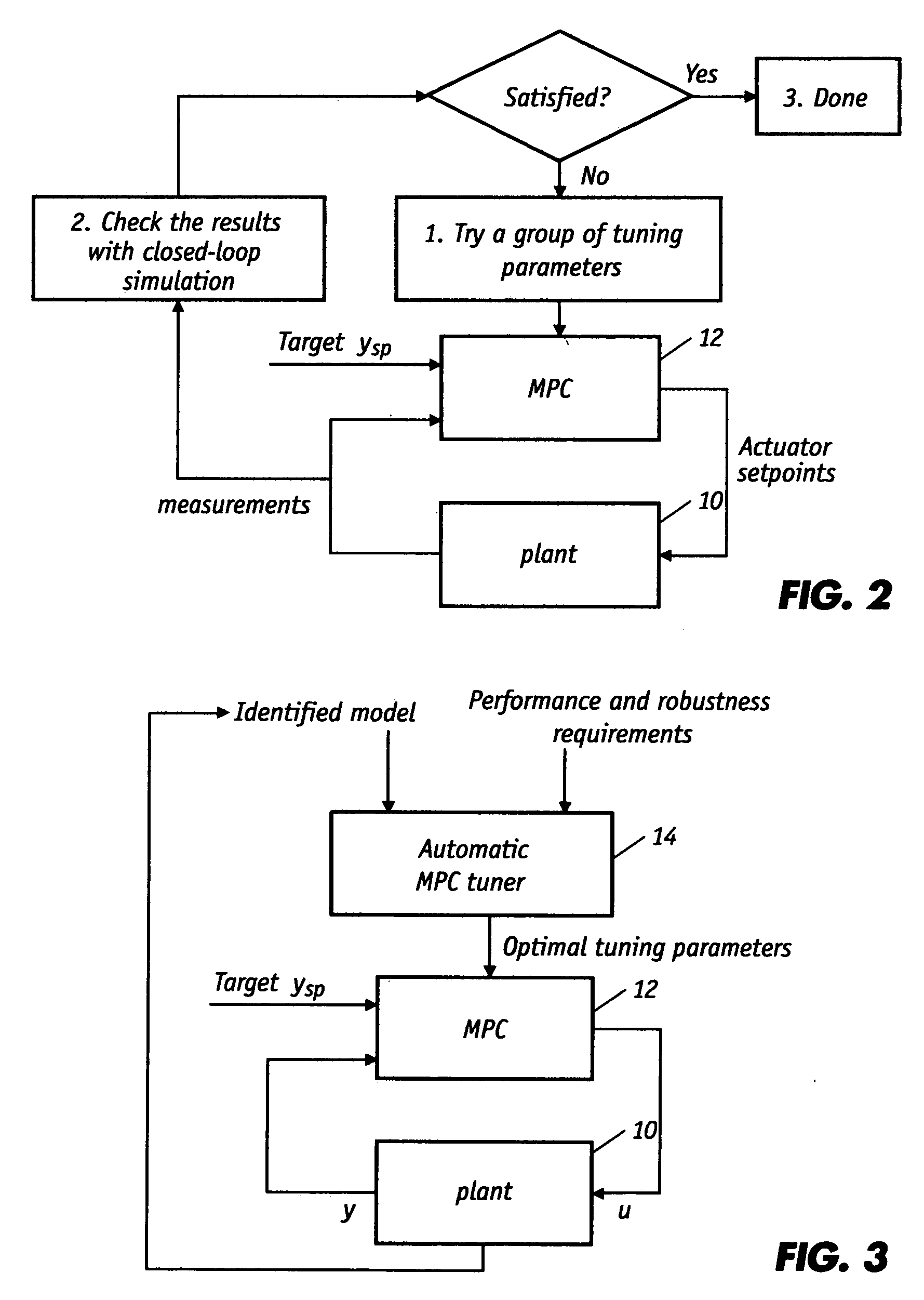Automatic tuning method for multivariable model predictive controllers
a predictive controller and multivariable technology, applied in the direction of adaptive control, electric controllers, instruments, etc., can solve the problems of cumbersome tuning procedure, large simulation volume, difficult tuning task, etc., and achieve the effect of fast and reliabl
- Summary
- Abstract
- Description
- Claims
- Application Information
AI Technical Summary
Benefits of technology
Problems solved by technology
Method used
Image
Examples
Embodiment Construction
[0020]FIG. 2 is a block diagram of an exemplary closed-loop control system in which the present invention may be utilized. In general, the plant 10 is controlled by the MPC 12 that takes measurements as inputs and generates outputs (actuator set points or positions). Target output properties or reference signals ysp are selected by the operator. As further described herein, the MPC has an object function in the form of a quadratic programming problem wherein the tuning parameters are matrices. In the prior art tuning process for the MPC, a group of tuning parameters are initially selected and manually set. Thereafter, a closed-loop simulation is executed and the results are analyzed. If the results are not satisfactory, this trial and error procedure is repeated using a new set of tuning parameters until the simulation yields the desired results. This prior art procedure typically does not adequately account for model uncertainty and is very dependent on the particular disturbances ...
PUM
 Login to View More
Login to View More Abstract
Description
Claims
Application Information
 Login to View More
Login to View More - R&D
- Intellectual Property
- Life Sciences
- Materials
- Tech Scout
- Unparalleled Data Quality
- Higher Quality Content
- 60% Fewer Hallucinations
Browse by: Latest US Patents, China's latest patents, Technical Efficacy Thesaurus, Application Domain, Technology Topic, Popular Technical Reports.
© 2025 PatSnap. All rights reserved.Legal|Privacy policy|Modern Slavery Act Transparency Statement|Sitemap|About US| Contact US: help@patsnap.com



